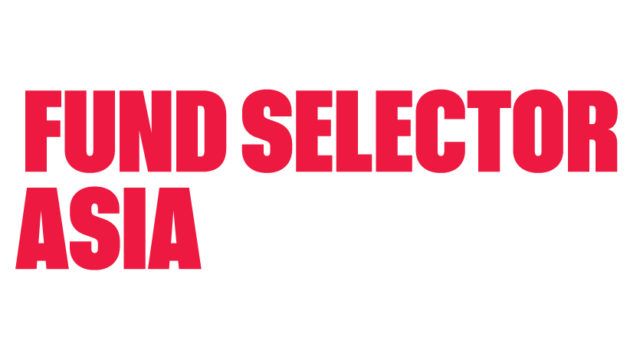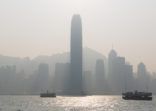Net inflows reached about $580m for locally-domiciled ETFs, which does not include cross-listing ETFs. It is a reversal from 2015, when ETFs had a net outflow of $1.8bn in 2015, data from Morningstar showed.
The net flows are defined as the cash flows excluding the price gains in the period.
Total ETF assets in Hong Kong reached HK$305.8bn ($39bn) in 2016, according to the Hong Kong Stock Exchange. Asia-Pacific ex-Japan ETF/ETP assets reached a record high of $135bn as noted by ETFGI, meaning about 29% is from the SAR.
Among local ETFs, State Street Global Advisor’s ABF Pan Asia Bond Index Fund saw the most net inflows ($925m) last year, followed by the Tracker Fund of Hong Kong ($744m), which is also managed by SSGA.
The Tracker Fund was the most actively-traded ETF during the year, but the Asia bond ETF didn’t make it to the top ten, according to data from Bloomberg and CSOP.
| Top five ETFs with most net inflows in 2016 | $m |
| ABF Pan Asia Bond Index (SSGA) | 925 |
| Tracker Fund of Hong Kong ETF | 744 |
| iShares Core MSCI AC Asia ex Japan | 538 |
| Hang Seng ETF | 243 |
| iShares Core Hang Seng | 99 |
| Top five ETFs with most net outflows in 2016 | $m |
| iShares FTSE A50 China | -1,153 |
| Hang Seng H-Share ETF | -487 |
| CSOP China 5-year Treasury Bond ETF | -236 |
| iShares MSCI China | -126 |
| W.I.S.E. – CSI 300 China Tracker ETF | -48 |
Source: Morningstar
SSGA Asia ex-Japan head of ETF business development Ray Chan said the demand for its Asia bond ETF mainly comes from institutional investors across Asia, including sovereign wealth funds, government-related funds, or asset managers who use it as “one of the building blocks for long-term strategic asset allocation”.
Asian bonds are one of the categories to look for yield amid the low interest rate environment, he told FSA. The ETF’s current yield stands at 3.68% as of 2016-end.
China outflows
In contrast, RQFII ETFs – passive funds that invest in onshore China A-shares or bonds using the quota from the qualified foreign institutional investor programme, saw a net outflow of $281m last year.
“All the China-related products have recorded quite a strong outflow, mainly in the second half of the year due to macro environment changes,” Morningstar’s director of ETF research for Asia Jackie Choy said.
iShares FTSE A50 China recorded a $1.15bn outflow last year, the biggest among all, but already smaller than $5.5bn in 2015. This ETF will gradually change into a physical ETF, which buys the actual underlying securitites of an index. It is currently a synthetic product using derivatives to replicate the performance.
The overall number of Hong Kong-listed ETFs, (excluding different currency trading counters and leveraged and inverse or L&I products), fell to 127 at the end of last year from 133 a year ago, according to a Securities and Futures Commission report. But the number increases to 139 if L&I products are counted.
Another 18 ETFs besides the L&I ETFs debuted trading in 2016, including 2 cross-listed ETFs, and about 26 were delisted.
| Average daily turnover (HK$bn) | 2016 | 2015 |
| A-shares ETFs | 1.6 | 6 |
| All ETFs | 4.1 | 8.8 |
| % of total stock market turnover | 6 | 8 |
Source: SFC
“The average daily turnover in 2016 was HK$4.1bn ($529m), which was 53% lower than the HK$8.8bn in 2015,” SFC noted. The average daily turnover of A-shares ETFs in the SAR plunged 73% to HK$1.6bn in 2016.
Hong Kong traction?
Susan Chan, head of iShares and indexing investment APAC, said in an email reply to FSA that the non-domestic exposures are starting to gain traction. The firm closed seven ETFs last year, all China focused, and instead listed eight new ones, in which six of them are non-China related.
“We have seen a high volume of assets move into Taiwan, Korea and broad Asian exposure here in our Hong Kong listed range,” she said. “We made a lot of changes to our Hong Kong product range last year. 2017 is a year where we will build on those foundations for our ETF business and look to capitalise on these trends driving the industry in Hong Kong.”
Still, despite the outflows of A-shares ETFs, three of them were still among the top five most actively traded products in 2016,” said CSOP ETF strategist Alvin Li.
Breakdown of ETFs in Hong Kong
| Sector | Market capitalisation (HK$m) | Market share | ||
| 2016 | 2015 | 2016 | 2015 | |
| Hong Kong equity | 174,389 | 169,620 | 57% | 55.9% |
| China A-shares | 63,885 | 79,112 | 20.9% | 26.1% |
| Fixed income & currency | 33,522 | 29,354 | 11% | 9.7% |
| Overseas equity | 29,740 | 14,421 | 6.8% | 4.7% |
| APAC equity | 11,886 | 10,329 | 3.9% | 3.4% |
| Commodity | 924 | 806 | 0.3% | 0.3% |
| L&I products | 517 | – | 0.2% | – |
| Total | 305,844 | 303,642 | 100% | 100% |
Source: HKEx, as of end of 2016
“The market sentiment clearly shifted into the Hong Kong stock market in 2016, and our key focus for this year will be on the L&I products,” Li continued.
The SFC earlier expanded the investment scope of L&I products to include broad-based Hong Kong equity indices and non-equity indices. CSOP, which already issued one pair of such products, said it filed applications on January 9, the first day for submission.
It hopes to list plain vanilla L&I products tracking the Hang Seng Index and Hang Seng China Enterprises Index by the first quarter, Li noted. He believes that Hong Kong can also attract the large capital inflows for L&I ETFs seen in Taiwan, as investors have a strong home bias when investing in ETFs.
“The inverse product, in particular, has a bigger selling point as it can act as a hedging tool.”
Morningstar’s Choy, however, has reservations.
“Hong Kong’s warrant and callable bull/bear contracts (CBBC) market is quite big compared to the Taiwan and Korea markets, where leveraged products were not common before the introduction of L&Is.”

















